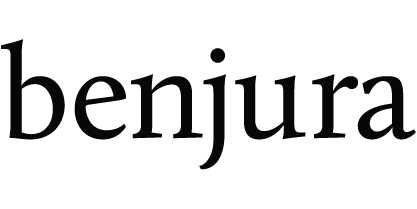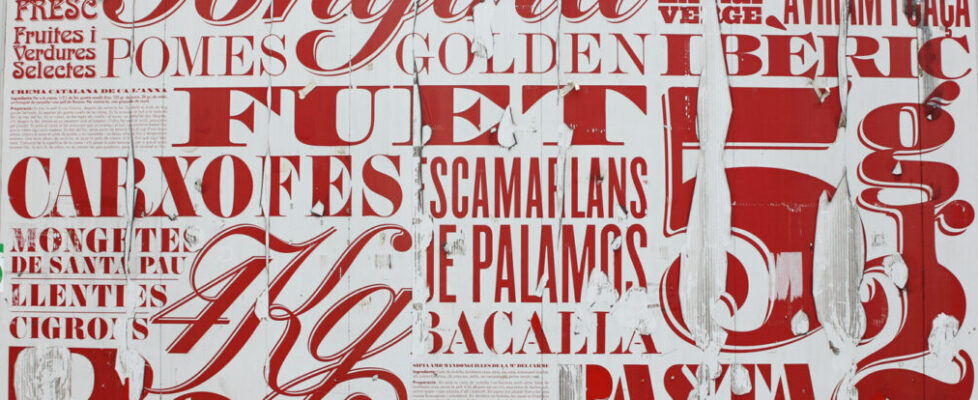Why Typography Is So Important for Your Brand
Typography is one of the most powerful tools of design and marketing, creating deeper brand meaning and influencing consumer sentiment
I love letters, as do most designers, illustrators, anthropologists, symbologists, idea geeks, writers, communicators … you get the point. Letters are pervasive and powerful. We all use them every day and get so much from them, yet we rarely “see” all the work they are doing.
On some level, we all understand this. Letters are just systematized sets of shapes that, when arranged in specific ways, symbolize concepts or sounds. That this works at all is amazing. The way that words are shaped and their letters drawn offers predictable meanings for the people who look at them beyond the meaning of the word itself. And the fact that most people intuit attitude, emotion and meaning from the “image” of the words they are looking at without even realizing it makes typography one of the most powerful tools of design and marketing when creating brand meaning and influencing consumer sentiment.
There is a reason that brands spend so much time and effort establishing rules and guidance around typography—and it isn’t just about consistency. There is an idea in rhetoric called emotive conjugation, where the face value of a statement can remain constant while the emotional meaning changes. Has someone reconsidered the matter, or have they gone back on their word? Is someone resolute or pig-headed? Are they a whistle-blower or a snitch? The same facts are being said, but something entirely different is being communicated. It’s not just what you say, but how you say it. It is the same for typography.
Beyond the meaning of the words that letters spell, the way they look and are used could be aggressive instead of confident, stark instead of sophisticated, or naïve instead of friendly, and the line between could be razor thin. Pentagram’s brand program for Fisher-Price is on exactly the right side of the line—playful, joyous and celebratory in a child-appropriate way, while still being beautiful, expertly crafted and credible—and this is largely due to the custom typeface that was developed for the program and the way it is deployed.
<iframe title=”vimeo-player” src=”https://player.vimeo.com/video/363346765?h=3ec9fe4f74″ width=”640″ height=”360″ frameborder=”0″ allowfullscreen></iframe>
The Fisher-Price typographic language works so well because of the way in which the meaning of the typography echoes and enhances the tone of voice and the other visual tools. It has a bouncing energy because of the tilted axes of the letterforms without becoming illegible and distracting. It has a friendly approachability stemming from its softly rounded corners and flowing ball terminals. Looking at the alphabet in this font gets you 80% of the way to a trustworthy, but fun, smartly considered childhood brand. If a toy were packaged in material covered with a roman serif like Trajan, would you assume it was a fun thing for a kid to play with? Unlikely. If a financial institution used Comic Sans or Papyrus for their communications, would you trust it with your money even if the verbal content was smart, focused and insightful? Equally unlikely. There is too much visual dissonance between the content of the letterforms and the personality that one would expect, or accept, for certain categories or brands. Typography has a psychology all its own and letters through their shapes communicate extensively.
Some of the work done by letterforms results from the shape and tone of the characters themselves, but much is due to subtle associations. Our branding and design strategy choices are somewhat bound by choices made by others in different areas. Humans take part in creating and consuming culture every day and all those subtle visual cues they are immersed in begin to have associative meaning.
For instance, it would be difficult to use an angular calligraphic brush script without invoking trendy wedding stationery or positive affirmation statements so prevalent on Pinterest. These are probably not the most desirable associations for a technology company, but for a small kitschy coffee shop? Maybe. The full visual impression of the typography has a gestalt on its own whether intended or not—in the former case going beyond the superficial “creativity” those style of letters might have communicated 20 years ago. The challenge is that culture is constantly shifting, and the meaning and associations people link with letterforms goes along for that ride.
The Cooper typeface (and its myriad variants) was an advertising staple in the 1920s and ’30s before falling out of favor after overuse. It then made a major comeback in the ’60s and ’70s with its use by the Beach Boys and the Doors, Garfield comics, and several others. It became strongly linked with the vernacular of that era. In the ’00s it would have been hard to use that style of lettering without evoking that era because that was its last prominent cultural use. Fast-forward 10-20 years and enter Mailchimp’s supporting typographic system, a new logo for Chobani, The Black Keys album art, brand fonts for Fisher-Price and the UK’s Pantree marketplace, all resurrecting creamy, bulbous letters with small counters and backwards tilts. Now, this typographic style has slowly been pulled from the ’70s back into a dominant position in today’s modern consumer brand landscape. Human brains are pattern-seeking machines, and they will find meaning, or they will create and attribute meaning and connection even where there is none. So, carefully consider the connections viewers may find a way to make.
If the words being created with the letters communicate one set of concepts and associations and the shape of the letters used and their cultural associations communicate another, there is also a third level that type works on. This third level of communication comes from the way in which the letters and words are used. Type can become textural as it does in the Honey & Mackie ice cream brand language. At this point the type is almost more image than word, flipping the script so that the viewer sees a visual of a summer boardwalk or nostalgic ice cream parlor before it even registers as words which then deepen the meaning of the image. Type can be a super-graphic element that positions letters to function more as an illustration than as part of a word or words, highlighting the unique character of the individual pieces. As in the Saks Fifth Avenue visual brand language or in the Coca-Cola packaging design systems, this approach tends to work best when the letterforms themselves have ownable and recognizable shapes and features. When done well, this can be a mic-drop for brands trying to show how much equity they have in minute typographic details. Coke is so Coke, anyone can recognize it based on a can with part of an ‘o’ and a ‘k’ visible and the rest obscured by the curve of the cylinder.
By using typography as a visual as well as a verbal communication tool, brands can benefit from the picture-superiority effect—where subjects remember image cues better than verbal ones. By forcing an individual to see your typography as an image that they encode as visual, and then again as a linguistic concept, you get twice the binding power over a word that just registers as a word. Lean into the emotional content of the letters, matching or enhancing those of the verbal content. Consider the cultural associations of the letterforms and the patterns that viewers will read into the typographic design. And push on how that type is used, considering its role as color or texture or macro illustration, or as a shape all its own. The trick is to find the sweet spot where it still works as a word and legibility isn’t hurt unintentionally breaking down letters ability to be their amazing, powerful and modular selves. Do that and you’ll see their incredible power and become a superfan, too.
Photo by Claudio Schwarz on Unsplash
Originally published on AMA.org

